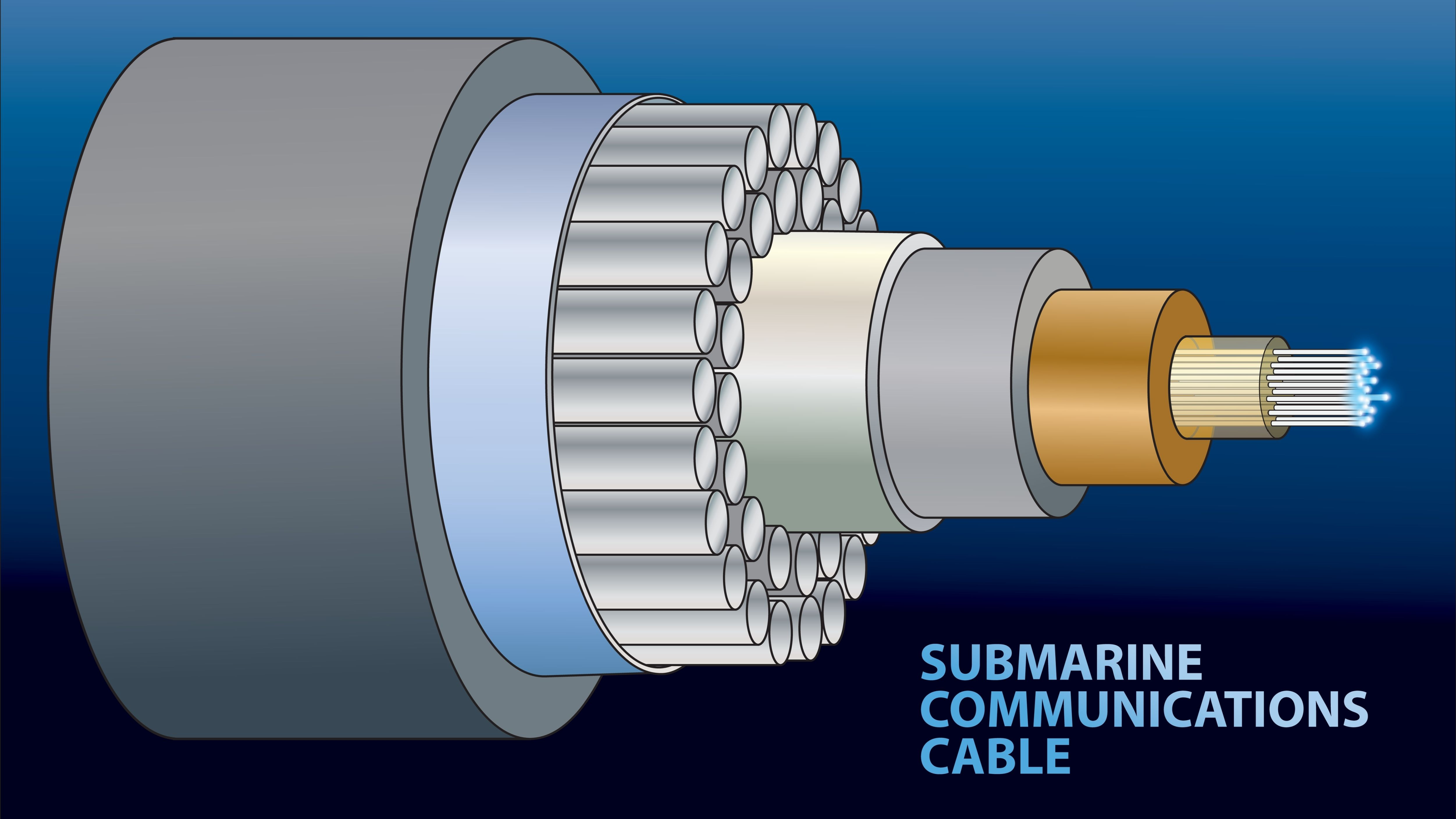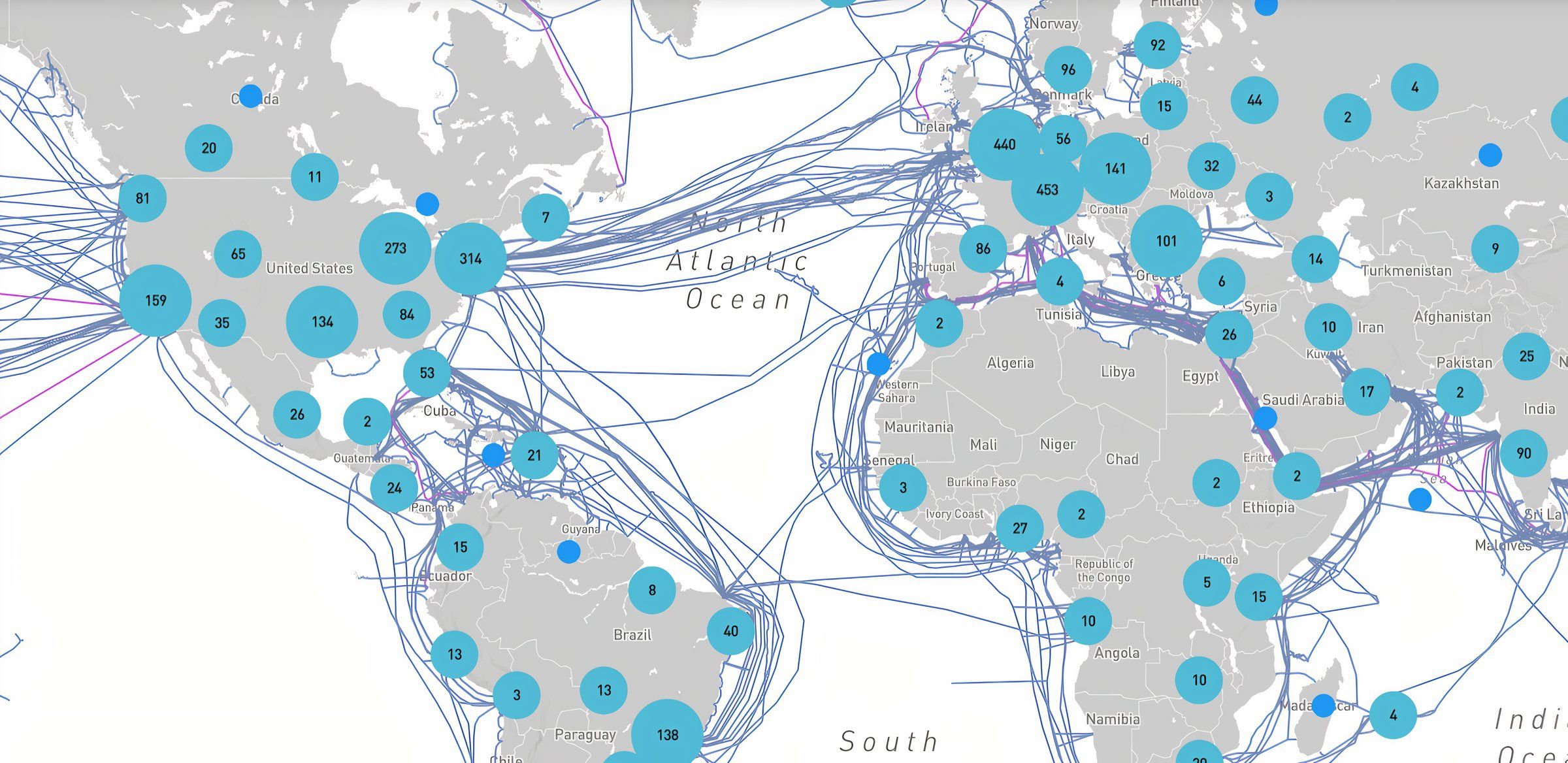Summary
- Undersea cables are crucial for internet connectivity. There are over 500 cables strung under the oceans.
- Cables are made of spun glass fibers with various layers protecting them, but they are vulnerable to natural forces.
- Cable ruptures occur frequently, impacting internet services, but repair ships restore connectivity efficiently.
The internet is so commonplace that most people don’t even think about what the world would be like if we lost connection. Yet, in some places, all that connects people to other people is a single underwater internet cable. Here’s what happens if those cables are cut.
The Invisible Backbone of the Internet
In the deep, dark depths of the sea are lines of communication most of us never really think about. However, when you’re streaming that live concert from London or checking out a website based in Australia, it’s all because of those cables. Over 500 cables strewn across the ocean floor keep the world connected. These undersea cables are a core part of how the internet works.
With such an important task, these are probably some pretty high-tech cables, right? Not really. If you were to look at a cross-section of these cables, you’d realize that they’re just regular communication cables with a solid tar exterior that makes them more resilient to ocean currents. Even how they’re deployed hasn’t changed all that much from the first transatlantic telegraph cable—they just spool it off the back of a ship.
Yet these cables are the only way to connect to people on the other side of the planet. Even though we have satellite networks, we still depend on these undersea cables to transmit and receive data. Some estimates put the data transferred through these cables at over 95% of the Internet’s total traffic. This fact alone makes it scary to think of what would happen if someone cut one of these cables.
How Tough Are These Cables?
At their core, these cables are similar to those that deliver fiber internet to our homes and offices. The core of these wires is made of spun glass fibers (formerly metal) that transmit light down their length. Companies that build these cables usually include more fibers than are necessary to meet future needs. Around the fibers are a series of layers, including petroleum jelly (insulation), copper sheathing, aluminum (water protection), mylar, and polyethylene.
These cables need all this protection to withstand the massive pressures and cold temperatures at the bottom of the oceans. They also have to compensate for the tension of stringing across ocean valleys and ocean quakes caused by tectonic activity. Despite all this, these cables aren’t as strong as you think.
Some videos show sharks trying to bite undersea cables. In at least one recent case, a telecommunications company blamed a shark bite for an undersea cable snap. Scientists assume that it’s because of the magnetic field that these cables produce since sharks use the earth’s natural magnetic fields for orientation. They may attack these cables because the generated field messes with their natural navigation abilities. However, sharks aren’t the only thing that can snap a cable.
Breaking an Undersea Internet Cable Is Easier Than You Think
In 2022, the island nation of Tonga suffered a cable outage that left them offline for five weeks. According to official reports, the cable snapped because of a volcanic eruption. Natural forces like these are sometimes too much for these resilient cables, and they just snap. Repair ships take time to fix these cables and usually need to trace the full length to find where the fault happened.
However, there are more sinister reasons why cables get snapped. These cables represent a potential target for sabotage, since damaging them can interfere with a nation’s communications.
Larger countries benefit in this sense, as they usually have multiple cables connecting them to the rest of the world. For example, the US is connected to the rest of the world by approximately 88 cables. For the entire country to be isolated, all of these cables would need to be severed, and since they travel from both coastlines, it’s next to impossible to do this. Yet even a single cable going down could cause some problems.
What Happens When They Snap?
If you live on a small island connected to the world via a single cable, like Tonga, a snap could mean getting cut off from the internet indefinitely. However, if you live in a larger country with multiple connection points, you probably won’t be affected much if a cable snaps. There are over 100 cable breakages annually, and we often never hear about them. Even so, this doesn’t mean that cable breakages don’t affect us.
When a subsea cable snaps, other cables must start taking more data transfer to make up the shortfall. This might have minor consequences, like more significant ping times, making gaming difficult in some areas. If you live in a place with a lot of internet traffic and depend on a few cables to connect it to the internet, a snap could mean service outages over a large area.
Layers of Protection Matter
Undersea cables have layers of protection, but beyond that, are they vulnerable? To some extent, yes. While our prediction methods have become better for spotting earthquakes and eruptions, there’s no way to be 100% sure when they’ll happen. When they do, they can cause cables to melt completely, cutting off some countries.
Beyond that, military assets patrol conflict areas to prevent sabotage. However, despite these measures, accidents cannot be prevented, and there will always be situations where a cable is mistakenly cut. Between natural disasters and accidental trawler accidents, there will always be undersea cable snaps.
Nothing to Worry About
With subsea cable ruptures happening so often, you shouldn’t worry about their impact too much. Sure, your Discord server may need to switch regions, or your ping might spike, making playing Marvel Rivals difficult, but these are minor issues compared to being completely isolated from the world.
No matter what happens, connectivity will eventually be restored, as the repair ships are very efficient at their jobs. Once they detect an outage, they can trace the line to repair the rupture in 5–10 hours. However, the time it takes to fix it depends on how far out at sea the break is. So, the next time you’re having a hard time in multiplayer, it’s probably not because of your skills but because one of those cables got snapped and hasn’t been fixed yet.






